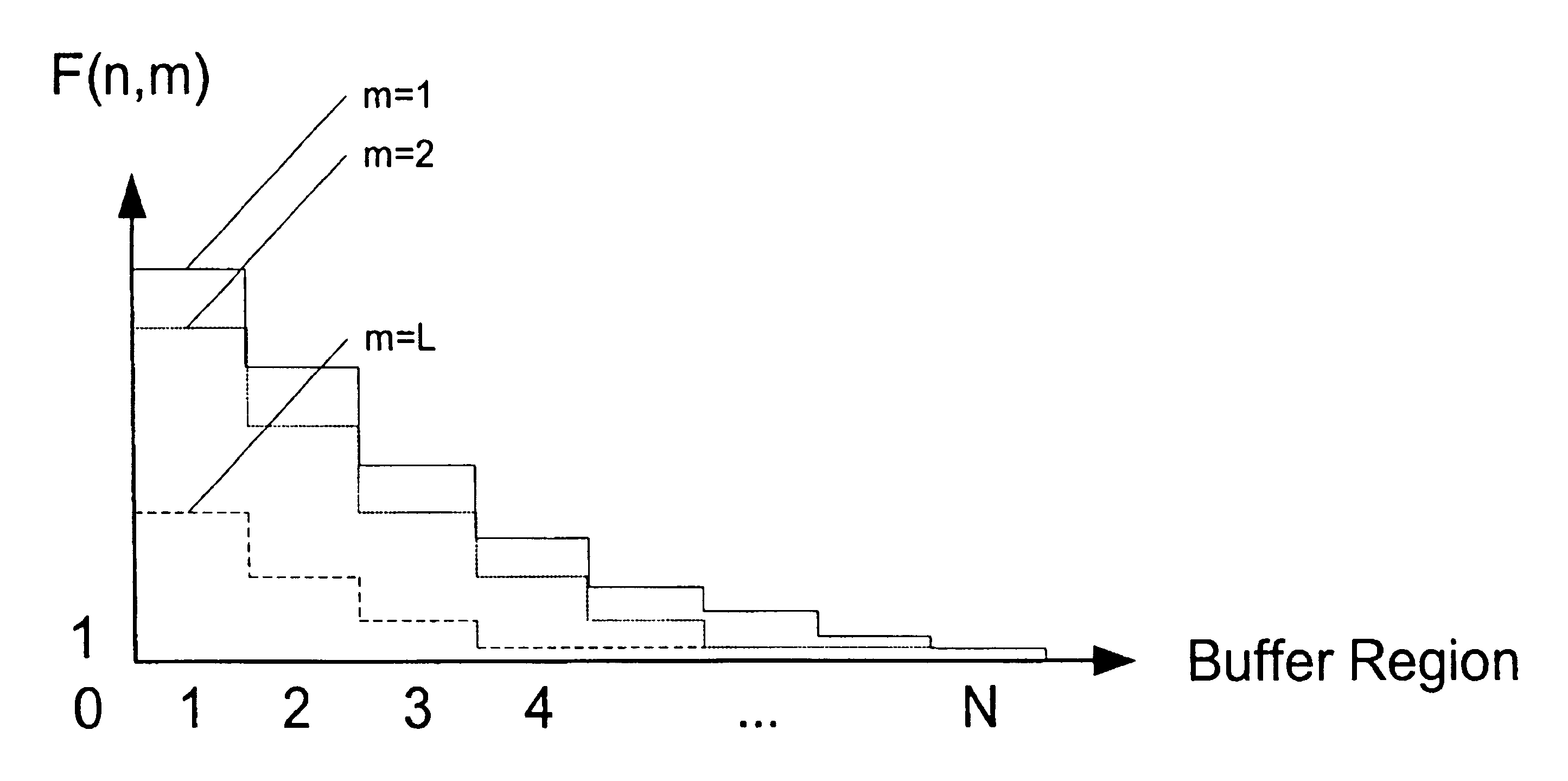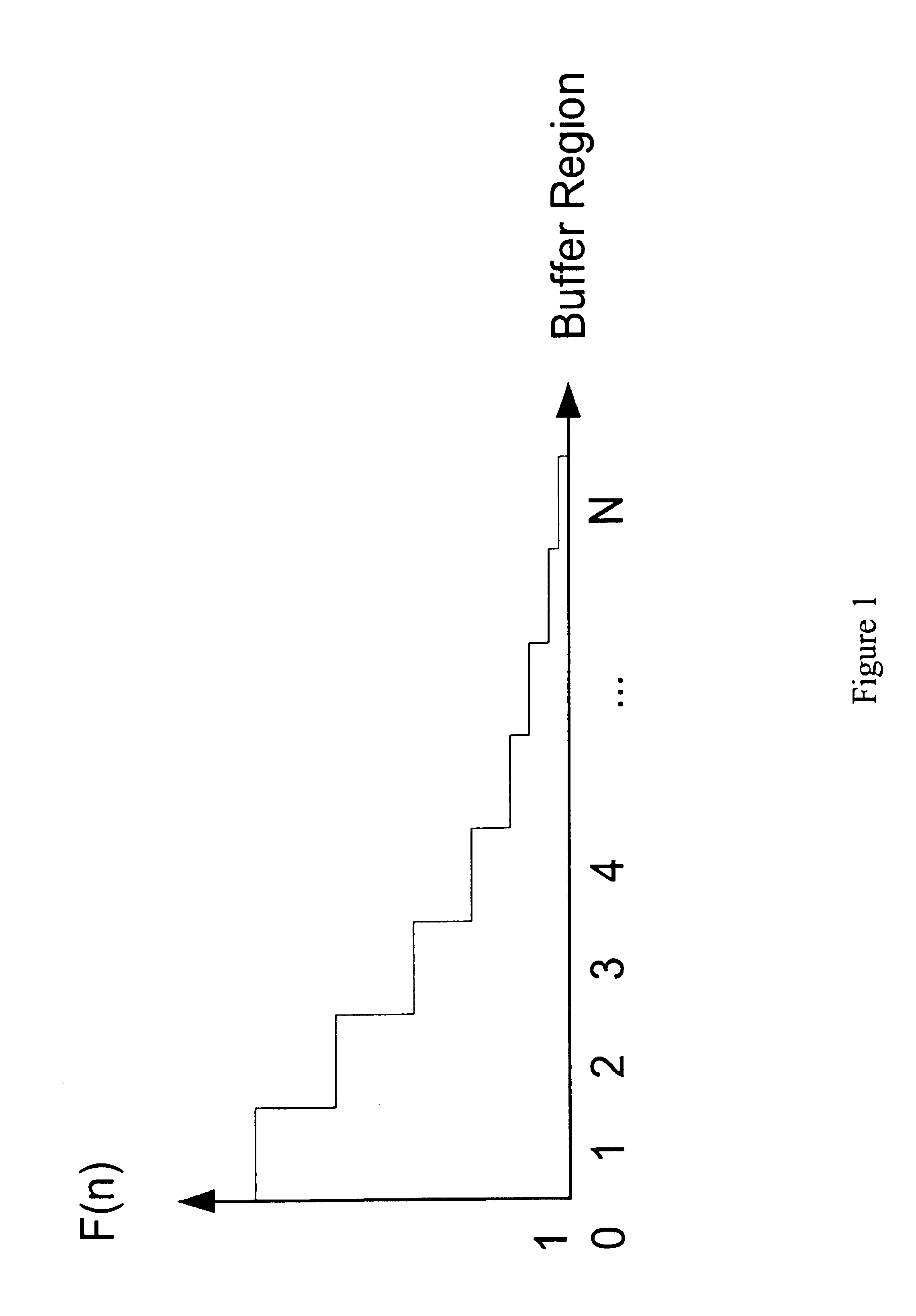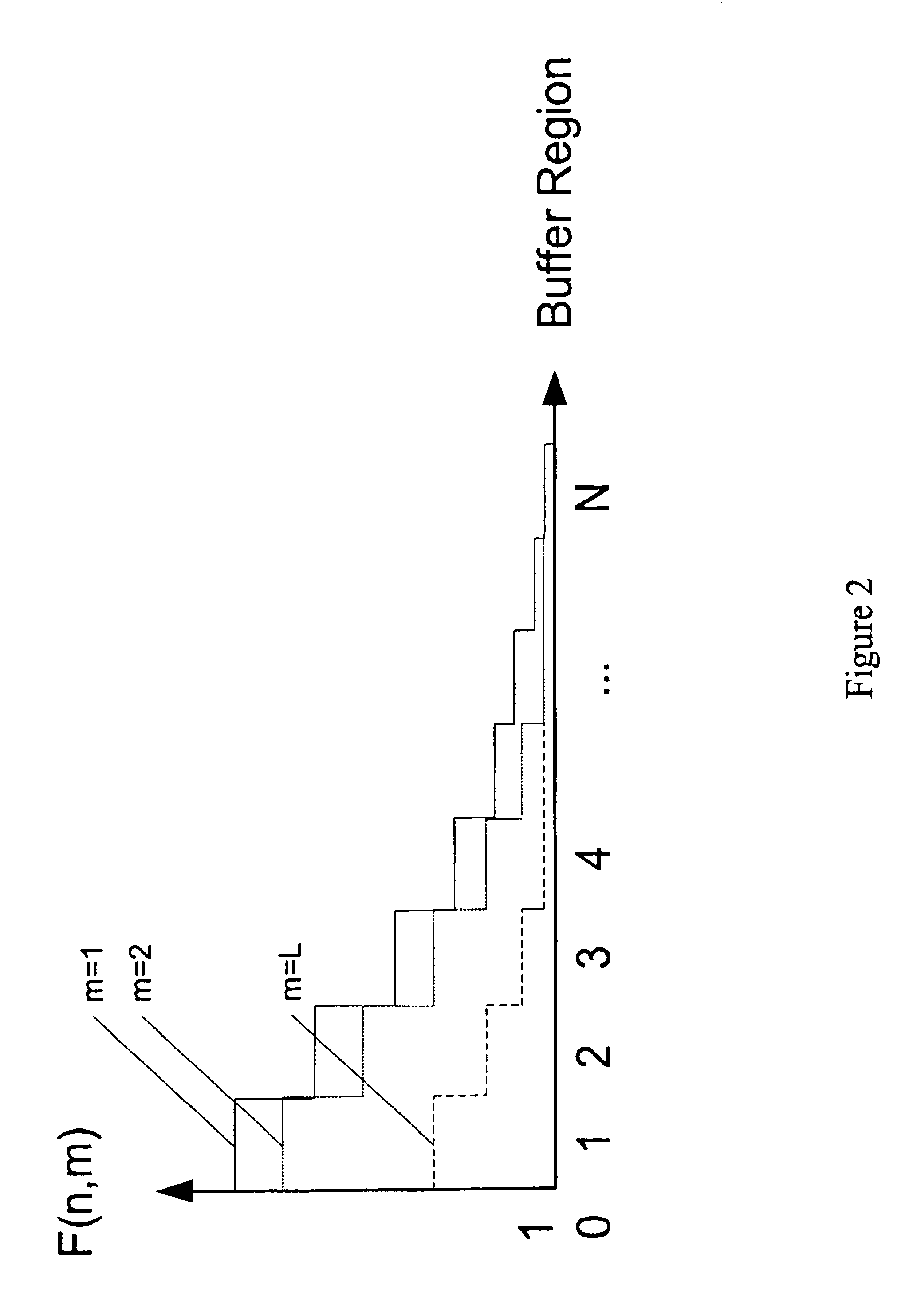Soft, prioritized early packet discard system
- Summary
- Abstract
- Description
- Claims
- Application Information
AI Technical Summary
Benefits of technology
Problems solved by technology
Method used
Image
Examples
Embodiment Construction
[0082]This invention modifies the Prior art method of soft-bounded congestion control, which is described in reference [9], in order to create a simple dynamic threshold EPD, herein referred to as Soft Prioritised Early Packet Discard (SPEPD).
[0083]A formal description of the soft-bounded congestion control is as follows. Let K* denote the state of the network without the dynamic control of station capacities, then K*=(k1*, k2* . . . , kL*) where ki* is the number of packets in the ith station, 1≦i≦L. After the control of the buffer size is applied, it becomes clear that all states represented by K* are not feasible. The normalization of the infeasible states is essential. The packet distribution in each state is adapted to the capacity limit of each station in the blocking network by the function f(k*)=(k), where (k) is the normalised state for the blocking network. The function f(·) maps the non-feasible state (k*) to the feasible state (k). As a result, the Markovian property of ...
PUM
 Login to View More
Login to View More Abstract
Description
Claims
Application Information
 Login to View More
Login to View More - R&D
- Intellectual Property
- Life Sciences
- Materials
- Tech Scout
- Unparalleled Data Quality
- Higher Quality Content
- 60% Fewer Hallucinations
Browse by: Latest US Patents, China's latest patents, Technical Efficacy Thesaurus, Application Domain, Technology Topic, Popular Technical Reports.
© 2025 PatSnap. All rights reserved.Legal|Privacy policy|Modern Slavery Act Transparency Statement|Sitemap|About US| Contact US: help@patsnap.com



